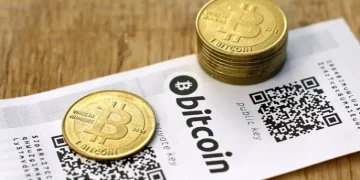1. What is Centralization?
Centralization refers to a system where control, authority, and decision-making are concentrated in the hands of a single entity or a small group of entities. In a centralized system, power flows from the top down, and all decisions are made by a central authority. This authority could be an individual, a company, a government, or any centralized institution that holds control over the system.
Key Characteristics of Centralized Systems:
- Single Point of Control: A single entity controls the entire system, including data, decision-making, and governance.
- Authority: The centralized authority can dictate terms, make rules, and enforce compliance.
- Hierarchical Structure: There is a clear chain of command where lower levels follow the decisions and directions of those at the top.
- Reliability and Accountability: Centralized systems tend to have clearly defined accountability, as the authority is responsible for the system’s functioning and decisions.
Examples of Centralized Systems:
- Banks: In the traditional banking system, banks act as intermediaries, controlling the flow of money, setting rules, and overseeing transactions.
- Social Media Platforms: Platforms like Facebook, Twitter, and Instagram are centralized, with one entity controlling the platform, user data, and content moderation.
- Government Systems: Many governmental processes, such as taxation or law enforcement, are managed in a centralized manner.
2. What is Decentralization?
Decentralization refers to a system where control, authority, and decision-making are distributed among multiple entities or nodes, rather than being concentrated in a central authority. In decentralized systems, decisions are often made collectively or through a consensus mechanism, without a single entity controlling the flow of information or transactions.
Key Characteristics of Decentralized Systems:
- Distributed Control: Power and authority are spread across multiple independent entities or individuals. No single party holds control over the entire system.
- Peer-to-Peer Interaction: In many decentralized systems, participants interact directly with one another, often without intermediaries.
- Autonomy and Transparency: Decentralized systems often prioritize transparency and individual autonomy, with decisions being made in an open, democratic, or transparent manner.
- Resilience and Security: Since there is no single point of failure, decentralized systems are often seen as more resilient to attacks or disruptions.
Examples of Decentralized Systems:
- Blockchain Networks: Cryptocurrencies like Bitcoin or Ethereum are decentralized systems, where transactions are verified by multiple nodes (computers) rather than a central authority.
- Peer-to-Peer Networks: File-sharing systems like BitTorrent, where files are shared between peers rather than through a central server.
- Decentralized Autonomous Organizations (DAOs): Organizations run by code and consensus rather than a single controlling entity, often used in cryptocurrency projects.
3. Key Differences Between Centralized and Decentralized Systems
Now that we have an understanding of the two systems, let’s take a closer look at how they differ in practice.
a) Control and Authority:
- Centralized Systems: In centralized systems, power and authority are concentrated in one central entity, which has the final say in all matters. This entity controls the system’s rules, updates, and enforcement mechanisms. For example, in a bank, the bank itself has control over your account, transactions, and even your data.
- Decentralized Systems: In decentralized systems, control is distributed among all participants. There is no single authority that governs the system. Instead, the participants collectively manage the system through consensus mechanisms. In the case of Bitcoin, for example, no single person or institution controls the network; all nodes participate in verifying transactions and maintaining the blockchain.
b) Decision-Making:
- Centralized Systems: Decision-making is hierarchical, with those at the top making decisions for the entire system. This can lead to quicker decision-making but also risks centralization of power.
- Decentralized Systems: Decision-making is often democratic or consensus-based, where all participants have a say. This can slow down decision-making but ensures that no single entity can unilaterally make decisions without the approval of others.
c) Security and Trust:
- Centralized Systems: Centralized systems can be more vulnerable to attacks or failures because if the central entity is compromised, the entire system is at risk. For example, if a bank is hacked, it could affect millions of customers.
- Decentralized Systems: Decentralized systems are often considered more secure because there is no single point of failure. Since information and control are spread across many nodes, attacking the system requires compromising a majority of the network, which is difficult to achieve. The security of blockchain is a prime example, where it would take a majority attack (51% attack) to compromise the network.
d) Transparency and Accountability:
- Centralized Systems: Centralized systems often lack transparency since the controlling entity is not always required to share information with the public. For example, a corporation might not disclose how decisions are made, or how customer data is used.
- Decentralized Systems: Transparency is a key feature of decentralized systems. In blockchain, for instance, all transactions are visible to anyone who participates in the network. This transparency creates accountability, as actions are publicly recorded and cannot easily be altered.
4. Advantages of Centralized Systems
While decentralized systems are gaining popularity, centralized systems still have many advantages, particularly in certain business contexts:
a) Efficiency:
Centralized systems can make decisions more quickly because they rely on a single authority or a small group of individuals to make decisions. This speed can be essential in fast-paced industries like finance or healthcare, where timely decisions can save lives or money.
b) Control and Stability:
With centralized systems, a single entity is responsible for maintaining control and stability. This can ensure that there is a clear direction and accountability for the system’s operations. For example, a central bank can control monetary policy and ensure economic stability.
c) Legal and Regulatory Compliance:
Centralized entities are often subject to legal and regulatory frameworks, making it easier to ensure compliance with laws. This is particularly important in industries such as banking or healthcare, where strict regulations are necessary to protect consumers.
5. Advantages of Decentralized Systems
Decentralized systems have their own set of advantages that can be highly valuable in certain contexts:
a) Resilience and Reliability:
Decentralized systems are inherently more resilient because there is no single point of failure. Even if one node or participant fails or is compromised, the system continues to operate. This makes decentralized systems particularly attractive for applications that require high levels of uptime and reliability, such as cryptocurrency networks.
b) Reduced Censorship and Control:
Since no single entity controls a decentralized system, there is less risk of censorship or manipulation. In systems like Bitcoin or Ethereum, transactions are not subject to the whims of a central authority, which can be a critical feature for financial freedom and privacy.
c) Increased Transparency and Trust:
The distributed nature of decentralized systems often leads to greater transparency. Because the data is publicly available and immutable, it fosters trust between participants. This is a major reason why blockchain is often used for supply chain management, where transparency is crucial for tracking goods and ensuring their authenticity.

6. Real-World Examples: Centralization vs. Decentralization
Let’s look at some real-world examples where the debate between centralization and decentralization plays out:
a) Finance:
- Centralized Finance (CeFi): Traditional banks and financial institutions are centralized. They act as intermediaries between individuals and their money. They control how money moves, what fees are charged, and what financial products are available.
- Decentralized Finance (DeFi): DeFi protocols, like those built on Ethereum, allow people to engage in financial transactions without intermediaries. Users can lend, borrow, and trade digital assets directly with one another, using smart contracts to facilitate transactions without relying on banks.
b) Social Media:
- Centralized Social Media: Platforms like Facebook and Twitter are centralized because they control the content users post, the algorithms that show content, and access to user data. They also enforce content moderation policies.
- Decentralized Social Media: Platforms like Mastodon or Steemit are decentralized alternatives, where users own their content, and no single entity can control the platform’s policies or data.
7. The Future: Will Decentralization Win?
While both centralized and decentralized systems have their merits, the future seems to be pointing toward a more hybrid approach, where decentralized technologies are used to enhance the transparency, security, and autonomy of existing centralized systems.
The rise of blockchain, decentralized finance (DeFi), and other decentralized technologies show a growing shift toward greater autonomy for individuals and businesses. However, the world isn’t ready to completely abandon centralization—especially in industries where efficiency, legal compliance, and regulatory oversight are necessary.
It’s likely that we’ll see a world where both systems coexist, with decentralized technologies gradually making inroads into industries traditionally governed by centralized systems.
Conclusion
Understanding the difference between centralization and decentralization is crucial in today’s rapidly changing technological landscape. Both systems offer unique benefits and have their respective drawbacks. The decision to implement one system over the other largely depends on the goals and needs of the business or organization in question. Whether it’s the efficiency and control of centralization or the transparency and resilience of decentralization, the right approach will vary depending on the use case.
As the world continues to evolve, however, the decentralized model may become more prominent, especially as blockchain and peer-to-peer technologies become more widespread. How businesses, governments, and individuals adapt to this changing landscape will determine how the balance between centralization and decentralization unfolds in the years to come.


















































